Kim, Woo-Jeong Professor
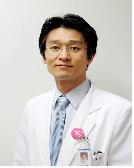
| Career and thesis | |
|---|---|
| Education | B.S., Department of Medicine, Seoul National University, 1995
Ph.D, Department of Medicine, Seoul National University, 2007 |
| Major career | Head of a Department of Emergency Medicine
Director, Emergency Medical Center, Jeju National Unversity Hospital Director, Office of planning and coordination, Jeju National University Hospital |
| main paper | JH Kang, WJ Kim, YJ Kang, SJ Kim. (2015). Can the optic nerve sheath diameter in brain magnetic resonance imaging be a predictor of elevated intracranial pressure. International Journal of Applied Engineering Research, 10(18), 39266-39268.
SK Lee, WJ Kim. (2015). Recognition of Medical Direction in Emergency Medical Service Personnel in Jeju. International Journal of Bio-Science and Bio-Technology, 7(6), 75-84. MY Kim, SY Choi, WJ Kim. (2015). Health Status of Haenyeo who visited the emergency department. International Journal of Bio-Science and Bio-Technology, 7(6), 33-40. JH Bu, JH Kang, WJ Kim. (2015). Awareness on Transportation of Paramedics in Jeju. Asia-pacific Journal of Multimedia Services Convergent with Art, Humanities, and Sociology, 5(5), 429-437. JH Kang, JH Bu, WJ Kim. (2015). Characterisitcs of Farmers’ Injuries in Jeju. Asia-pacific Journal of Multimedia Services Convergent with Art, Humanities, and Sociology, 5(5), 279-286. JH Bu, CB Park, WJ Kim. (2015). Insulin attenuates gene expression of inducible nitric oxide synthase during hemorrhagic shock in rats. International Journal of Applied Engineering Research, 10(13), 39626-39628. SE Oh, WJ Kim, MY Kim. (2015). Correlations between medical students' self- assessment of communication skills and patient-physician interaction assessed by standardized patients in clinical performance examination. . International Journal of Bio-Science and Bio-Technology, 7(3), 1-8. KW Kang, WJ Kim, KS Kim, YH Jo, JE Rhee, JH Lee, YJ Kim, JH Lee, SB Kang, DW Kim, KH Lee, YH Kim, HM Park. (2015). Effect of pain control in suspected acute appendicitis on the diagnostic accuracy of surgical residents. Canadian Journal of Emergency Medicine, 17(1), 54-61. |

Sung Wook, Song Associate Professor
- Major
Emergency Medicine Emergency Medical System
- office
- Contact064-754-8136/82-64-754-8136
- E-mail sungwook78@gmail.com
- Homepage https://nasion.me
| Career and thesis | |
|---|---|
| Education | Doctor of Medicine (Jeju National University College of Medicine), 2004
|
| Major career | Fellowship, Emergency Medicine, Seoul National University Hospital
|
| main paper | Sung Wook Song, Jin Sik Park, Hwan Jun Je, Hyun Ju Lee, Eun Ah Park, Sang Do Shin, Seong Ku Jeong, Young Ho Kwak, Gil Joon Seo. Usefulness of Quantitative Analysis of Computed Tomography Pulmonary Angiography as a Predictor of Prognosis of Acute Pulmonary Embolism, Journal of the Korean Society of Emergency Medicine. 2009 Joonghee Kim, Hwijae Lee, Sungwook Song, Jinsik Park, Hwanjun Jae, Whal Lee, Sangdo Shin, Sungkoo Jung, Youngho Kwak, Giljoon Suh, Jaehyung Park. Efficacy and safety of the computed tomography coronary angiography based approach for patients with acute chest pain at an emergency department: one month clinical follow-up study, Journal of Korean medical science, 2010 Sung Wook Song, Kyuseok Kim, Joong Eui Rhee, Jin Hee Lee, Gil Joon Seo, Hyun Mi Park. Butylscopolammonium bromide does not provide additional analgesia when combined with morphine and ketorolac for acute renal colic, Emergency Medicine Australasia, 2012 SW Song, KJ Song, KJ Hong, YJ Lee, SS Hwang. Development of Public Health Assessment Toolkit for Emergency Response to Regions where Climate Disasters Frequently Occur, The Journal of Emergency Medicine, 2012 KJ Hong, KJ Song, SW Song, SD Shin. Detecting Prehospital Hemoperitoneum Remotely Through FAST And 3 G Network: A Simulation Study, The Journal of Emergency Medicine, 2012 SW Song, KJ Song, KJ Hong, Sang Do Shin. Characteristics of Severe Heat Related Illness Victims of Emergency Department Visits from Nation-wide Regional In-depth Surveillance System, The Journal of Emergency Medicine, 2012 Kyoung Jun Song, Sang Do Shin, Ki Jeong Hong, Kyoung Woo Cheon, Ilhyoung Shin, Sung-Wook Song, Hee Chan Kim. Clinical applicability of real-time, prehospital image transmission for FAST (Focused Assessment with Sonography for Trauma), Journal of telemedicine and telecare, 2013 Seo Young Ko, Sung Wook Song, Woo Jeong Kim, Young Joon Kang, Kyeong Won Kang, Hyun Soo Park, Chang Bae Park, Jeong Ho Kang. The Demand and Causes of Emergency Medical Service Utilization of Visitors on Jeju Island, South Korea, Journal of the Korean Society of Emergency Medicine, 2014 Min Sung Lee, Ki Jeong Hong, Sang Do Shin, Kyung Jun Song, Hyun Wook Ryoo, Sung Wook Song, Yu Jin Lee, Kyoung Ai Park, Kwang Sung Lee, Development and Implementation of Emergency Department based Heat related Illness Active Surveillance System: Effect of Heat Index on Daily Emergency Department Visits due to Heat related Illness, Journal of the Korean Society of Emergency Medicine, 2014 Sun Kyung Park, Yun Suk Choi, Sung Wook Choi, Sung Wook Song. A comparison of three methods for postoperative pain control in patients undergoing arthroscopic shoulder surgery, The Korean journal of pain, 2015 Sung Wook Song, Seung Jin Yoo, Jeong Rae Yoo, Keun Hwa Lee, Jae-Wang Kim. Severe Fever with Thrombocytopenia Syndrome Mimicking Scrub Typhus: Three Case Reports, Journal of the Korean Society of Emergency Medicine, 2015 Jin Koo Lee, Young Joon Kang, Sung Wook Song, Woo Jung Kim, Kyongwon Kang, Hyun Soo Park, Chang Bae Park, Jeong Ho Kang, Ji Whan Boo, Sung Geun Lee. Comparison of Injury Patterns between All-terrain Vehicles and Motorbike Riders in Jeju Island, Journal of the Korean Society of Emergency Medicine, 2016 Dong Sun Choi, Taeyun Kim, Young Sun Ro, Ki Ok Ahn, Eui Jung Lee, Seung Sik Hwang, Sung Wook Song, Kyoung Jun Song, Sang Do Shin. Extracorporeal life support and survival after out-of-hospital cardiac arrest in a nationwide registry: A propensity score-matched analysis, Resuscitation, 2016 |
| Career and thesis | |
|---|---|
| Education | |
| Major career | |
| main paper | |
| Career and thesis | |
|---|---|
| Education | |
| Major career | |
| main paper | |
| Career and thesis | |
|---|---|
| Education | |
| Major career | |
| main paper | |
| Career and thesis | |
|---|---|
| Education | |
| Major career | |
| main paper | 1. The effect of high-dose intramuscular epinephrine on the recovery of spontaneous circulation in an asphyxia-induced cardiac arrest rat model. BMC Cardiovascular Disorder. 2021 Feb 25;21(1):113.
2. Effect of a multidisciplinary program to improve organ donation in the emergency department. European Journal of Emergency Medicine. 2021 Jan 1;28(1):58-63. 3. The ratio of N-terminal pro-B-type natriuretic peptide to troponin I for differentiating acute coronary syndrome. American Journal of Emergency Medicine. 2019 Jun;37(6):1013-1019. 4. 뇌 지방색전증에 의한 심정지 증례 1례(Cardiac arrest occurred by cerebral fat embolism). Journal of The Korean Society of Emergency Medicine. 2021;32(6): 712-715. 5. The impact of the improvement in internal medicine consultation process on ED length of stay. American Journal of Emergency Medicine. 2018 Apr;36(4):620-624. 6. Predictor of Isolated Trauma in Head: A New Simple Predictor for Survival of Isolated Traumatic Brain Injury. Journal of Emergency Medicine. 2018 Apr;54(4):427-434. 7. Non-aneurysmal and non-traumatic subarachnoid hemorrhage after attempted suicide by incomplete hanging. Clinical Experimental Emergency Medicine. 2017 Mar 30;4(1):56-59. 8. Pneumoperitoneum by Inguinal Laceration after Traffic Accident. Journal of Emergency Medicine. 2017 Sep;53(3). 9. The suprasternal notch as a landmark of chest compression depth in CPR. American Journal of Emergency Medicine. 2016 Mar;34(3):433-6. 10. The Comparison of Accidental Poisonings Between Pharmaceuticals and Nonpharmaceuticals in Children Younger than 3 Years. Pediatric Emergency Care. 2015 Dec;31(12):825-9. 11. Effect of multifaceted interventions on reducing return visits within 72 h after non-traumatic emergency department visits. Emergency Medicine Australas. 2015 Oct;27(5):431-9. 12. The uniform chest compression depth of 50 mm or greater recommended by current guidelines is not appropriate for all adults. American Journal of Emergency Medicine. 2015 Aug;33(8):1037-41. 13. Simultaneous event of brachial artery occlusion and acute embolic stroke. American Journal of Emergency Medicine. 2015 Mar;33(3):477. 14. The possibility of application of spiral brain computed tomography to traumatic brain injury. American Journal of Emergency Medicine. 2014 Sep;32(9):1051-4. 15. Does the quality of chest compressions deteriorate when the chest compression rate is above 120/min? Emergency Medicine Journal. 2014 Aug;31(8):645-8. |










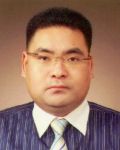
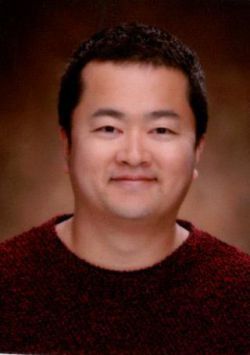
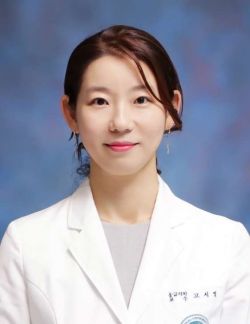
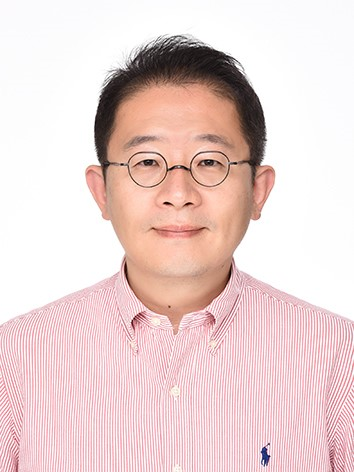


 예비대학생
예비대학생 재학생
재학생 졸업생
졸업생 일반인
일반인 교직원
교직원